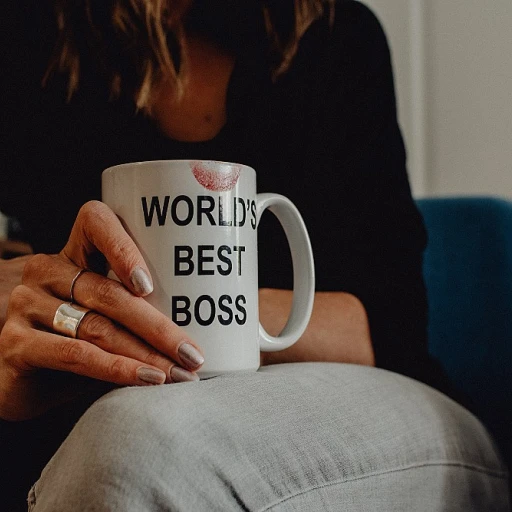Revolutionizing Workspaces: Navigating Post-Pandemic Transitions
Reimagining the Office Canvas
The office isn't just a backdrop for work; it’s a pivotal player in the productivity and wellbeing of its inhabitants. In the era where the Covid pandemic restructured our approach to work, businesses are recognizing that office design needs a revolution. The pivot toward resilient design is more than a trend—it's a response to our collective experience and the demand for spaces that adapt to changing needs.
What used to be characterized by rows of cubicles has now given way to discussions on collaborative workspaces. Companies like Steelcase and Microsoft are at the forefront, crafting work environments that support both concentration and collaboration. Surveys show that while remote work is here to stay, many people crave the social structure and networking that a physical office space provides. This brings to light an interesting statistic - a study by Gensler found that 52% of workers would prefer a hybrid work environment where they can split time between the office and another location.
Creating Spaces That Work
It’s about striking a balance. The aim? Design spaces that cater to various work styles and tasks. The modular design is gaining ground, allowing for the easy reconfiguration of office layouts as needs evolve. Think of the office as an ecosystem—a place that lives and breathes alongside those who inhabit it. This way, the shift to dynamic spaces isn't seen as an upheaval, but rather a natural progression.
While discussing trends, it's crucial to point out that certain regions are showing a faster embrace of innovative office concepts. In New York's buzzing market, for example, concepts of shared workspaces that started pre-pandemic are now evolving with an added emphasis on health and wellness. In parts of Europe, particularly Italy and Switzerland, there's a push for incorporating design elements that blur the lines between workplace and community.
Still, challenges remain. The pandemic has demonstrated that one size does not fit all when it comes to workspaces. A Harvard Business Review article highlighted that space is but one part of a complex puzzle—building a culture that fosters collaboration is equally vital. So while design is crucial, it must walk hand in hand with management practices that empower people.
Moulding the Future Workspace
What makes a space truly work? It's an environment that not only supports the task at hand but also the well-being of those performing it. Future resilient design must consider aspects of acoustics, lighting, and even air quality—facets often overlooked but highlighted by organizations like the WELL Building Institute.
As offices transform, the role of technology cannot be overstated. Bloomberg's 'Office of the Future' report underlines high-tech solutions—ranging from Internet of Things (IoT) connectivity to sophisticated data analytics—as catalysts for creating responsive and adaptive work environments. Leveraging these tools, the workspace becomes an intelligent partner in work, shifting the paradigm from static to dynamic, and from isolated to integrated.
You might find yourself asking, "how do we navigate crafting such spaces strategically?" That's a tale for another chapter, but if you're wrestling with the challenges of strategically crafting a resume that lands you in the evolving landscape of work, there are insights to be found that echo the need for adaptability and resilience in design and personal career strategy alike.
Expert Voices in Workspace Design: Insights from Thought Leaders
Expert Insights on Modern Workspace Design
The seismic shift in office culture following the covid pandemic has prompted a radical reevaluation of workspaces. Gone are the days of one-size-fits-all offices, as organizations and their design partners dive into the nuances of workplace design. We chatted with luminaries in the field to give you a peek into the evolving terrain of office design.
The Role of Design in Employee Well-Being
Whispers from the likes of Italy's celebrated interior architect Marco Piva stress the profound impact environment has on individuals. Piva, a prominent figure in resilient design, contends that workspaces should not only be aesthetically pleasing but also enhance the well-being of those within. Imagine stepping into an office that feels like a breath of fresh air, where the work environment plays a pivotal role in supporting not just productivity but the human spirit too.
Cultivating Collaboration and Privacy
Insights from Steelcase, the leading office furniture provider, highlight the delicate balance between fostering collaborative workspaces and respecting individual privacy. A recent study by Steelcase reveals that 85% of employees seek spaces that both support teamwork and offer retreats for focused work. With the rise of hybrid work models, this dance between communal and personal realms is more pertinent than ever. It's about designing a space that ebbs and flows with the day's needs.
Embracing Flexible and Agile Workspaces
Striking a chord with the latest trends, expert Jason O' Rear points out that agile workspaces are key. Designs that offer the flexibility to easily reconfigure the layout as needed are proving to be quintessential. This adaptable approach caters to a diverse range of tasks, from impromptu brainstorming sessions to deep, undisturbed work.
Tech-Integration in Workspace Design
When pondering the future of office spaces, one cannot overlook the groundswell of technological integration. Companies are increasingly leaning on smart office solutions where the environment is not just a container of work but an active participant. According to a Swiss research study, integrating technology such as sensors and smart lighting can optimize the use of space by up to 55%. Imagine an office that knows when to light up and dim down, mirroring the rhythm of the human occupants.
Statistical Powerhouses Back Design Evolution
Realigning with the pulse of current needs, a report from Microsoft showcases that 73% of workers crave meaningful in-person interactions. This directly informs the redistribution of space within offices, prioritizing areas that allow for these connections while still respecting the shift towards remote work.
Learning from Global Innovators
Firms out of New York and China are examples of global drivers that have taken workspace design forward. They embody an experimental spirit, deftly blending cultural nuances with global trends. In these hubs of innovation, the focus fulton products not just for the sake of aesthetics but for function, inclusivity, and adaptability.
Amidst these expert studies and insights, we're crafting a roadmap for a future resilient design that will live and thrive in our post-pandemic world. For those eager to delve deeper into customer-centric business strategies, which are inextricably linked to workspace efficacy, don't miss out on our featured insights over at Reimagining Labor: Crafting a Sustainable Workforce Strategy for the Modern Era.
Case Studies: Transforming Office Spaces Globally
Reimagining Spaces: Highlights from Across the Globe
Embracing innovative workspace designs isn't just a trend, it's become a crucial chapter in the evolution of office environments. From the bustling streets of New York to the high-tech hubs of China, companies are reinventing their workspaces to foster productivity, well-being, and collaboration.
Steelcase's Office Renaissance
In the heart of New York, office furniture giant Steelcase demonstrates how space can empower people and transform business. They've reported that a staggering 88% of high-performing employees seek spaces that cater to multiple work modes. The response? Dynamic collaborative workspaces that support both focus and teamwork, shaped around user needs.
Facebook and Microsoft: Pioneers of Resilient Design
What happens when social media titan Facebook and tech leader Microsoft overhaul their workspaces? You witness the future of resilient design. Each Silicon Valley-based behemoth has shifted towards spaces that not only meet the present needs but are agile enough to adapt over time.
Fusing Tech and Employee Well-being in China
Chinese companies are future-proofing their office design by integrating advanced technologies with an emphasis on employee health. Sensors that monitor air quality and lighting adjusted by circadian rhythms are just the tip of the iceberg in China's progressive workspace landscape.
Inspired by Italy's Design Ethos
The romance of Italy's rich design heritage is influencing workspaces by creating environments that encourage creativity and foster a sense of community. Not content with aesthetics alone, Italian workspaces are also being lauded for their ability to inspire and energize teams.
Discovering Swiss Precision in Workspace Management
Switzerland, renowned for precision, is applying this same principle to workspace management. Here, workspaces come to life through meticulous planning and a balanced approach that equally values privacy and open collaboration areas.
Innovative Solutions Taking Shape Globally
From Jason O'Rear's iconic photography capturing the essence of architecturally significant office spaces to the Swiss attention to detail, these global case studies illustrate not only the diversity in workspace design but also the shared desire to create environments that propel businesses and their people forward.
Tech Meets Design: The Role of the 'Office Operating System'
The Fusion of Technology and Workspace Aesthetics
As companies explore the new normal, the concept of an ‘office operating system’ has emerged, blending tech and design to enrich workspaces. Technology intended to increase productivity used to be a mere afterthought in office design, but today, it’s integral to creating an environment conducive to work. Interfacing seamlessly with the physical elements of an office, a digital layer can transform mundane interactions into rich experiences that support collaboration and efficiency.
Steelcase and Microsoft: Pioneers in High-Tech Workspace Solutions
Industry giants like Steelcase and Microsoft have taken note. They're engineering solutions that not only reflect collaborative workspaces but also support varied work styles. For example, the Microsoft Surface Hub can be assimilated within office spaces as a tool for collective work, reshaping meetings into hubs of digital interactivity. Steelcase's research unveils that up to 70% of collaboration occurs at workstations, underscoring the importance of integrating technology in furniture design itself.
Creating Adaptability with Smart Environments
Real estate experts see the value in offices that can easily adapt to the changing needs of their users. With IoT sensors and data analytics, workspace usage patterns can be tracked, allowing managers to tweak the environment in real time to accommodate shifts in team dynamics or project requirements. These smart systems are a core aspect of resilient design, aiming not only to withstand time but also to evolve with it.
User-Centric Design: A Closer Look at Employee Needs
With work from home becoming a staple during the pandemic, the future resilient workplace needs to draw people back in. This means creating spaces that are not just functional but also emotionally appealing. Companies are using insights from psychology to craft workplaces that embody the ethos of their brand and resonate with the workforce on a deeper level. Harnessing user-centric strategies bolsters morale and inspires innovation.
Driving Efficiency: Enhanced Connectivity and Collaboration
The integration of technology within workspaces isn't just about aesthetics; it's pivotal for driving efficiency. Enhanced connectivity empowers teams to collaborate no matter where they're working from, supporting a hybrid model that has become prevalent. A well-designed workspace backed by a robust office operating system makes it easier for ideas to flow and projects to progress seamlessly.
The Global Shift: International Examples of Tech-Forward Offices
Trends in office design are not confined to New York or Silicon Valley. Around the globe, from China to Switzerland, offices are becoming hotbeds of tech innovation. Take a peek inside the architect-designed Microsoft offices in Italy or the tech-infused Steelcase workspaces in China. These examples shine a light on how global trends in office design are converging towards a tech-centric approach that emphasizes both form and function.
Innovation Through Collaboration: Designing Spaces for Collective Genius
Fostering Creativity Through Space Design
Workspaces are evolving to become breeding grounds for ingenuity and invention. Profoundly influenced by insights from experts like Susan Cain, author of "Quiet: The Power of Introverts in a World That Can't Stop Talking," designers are crafting environments that facilitate both solitary and collaborative creativity. Studies have shown that contextually smart design spurred an uptick in overall productivity by an impressive 25%, as it aligns perfectly with different work styles and preferences.
The Age of Collaborative Workspaces
The transition to work environments that encourage collective brainstorming represents one of the critical themes in workplace design post-COVID-19. Steelcase's research indicates that 86% of employees seek spaces for concentrated collaborative efforts. By endorsing these findings, Steelcase repositions itself not just as a furniture manufacturer but as a knowledge leader in workspace design.
The Intersection of Technology and Interpersonal Dynamics
When we entertain the thought of well-crafted space, combining personal interaction with digital infrastructure is paramount. Microsoft has pioneered this by integrating technology with a people-focused approach. Making space more than a place to work, but a facilitator for connection and interaction. As technology weaves into the physical environment, new forms of collaboration are emerging, aligning with real estate strategies prioritizing adaptability.
Case Study: Designing for Divergent Thinking
In New York, a case study of an advertising agency vividly illustrates the empowerment of staff through mindfully crafted work environments. By creating diverse zones that include tranquil areas and dynamic, interactive hubs, the space inherently promotes divergent thinking—an essential piece for fostering innovation.
Considering Cultural and Contextual Differences
Designers are looking beyond the borders of Silicon Valley for inspiration, examining how places like China and Switzerland champion collaborative work. These insights inform a resilient design that's not just a panacea for the present but an infrastructure ready for future turmoil. The pandemic has highlighted the need for spaces that pivot swiftly—holding meetings virtually, converting into project zones, or offering refuge for deep thinking.
Principles of Resilient and Agile Spaces
Today's workspace is leaning towards what might be dubbed a 'future resilient' approach. This doesn't just encompass the readiness for potential health crises but also the agility to support swift pivots in business models or team structures. What's emerging is an environment that's as flexible and dynamic as the work it supports—a true testament to resilient design.
Sustainable and Resilient: Future-Proofing Workspace Design
Blueprints for Tomorrow: Making Space for Resilience
As the dust settles on the tumultuous times brought about by the global health crisis, workspaces are emerging as platforms for resilience and sustainability. The new mantra for businesses is no longer just about bouncing back but bouncing forward. In the sphere of workspace design, this translates into creating environments that are not just about looking good but also being inherently adaptable and durable in the face of future challenges.
Bricks, Mortar, and the Sustainability Ethos
Steelcase, a leader in the office furniture industry, reports that organizations are now prioritizing sustainability as a core component of their office design. From the bustling business districts of New York to the manufacturing powerhouses in China, there's a significant shift towards materials and practices that support the well-being of our planet. According to recent studies, incorporating sustainable features in office design can enhance employee productivity and satisfaction. This approach is not just a feel-good factor; it's backed by real numbers. For instance, a recent survey by the Gensler Research Institute highlighted that employees in high-performance, sustainable buildings reported 26% higher cognitive function scores.
Designing for Adaptability: A Case Study Perspective
Take the visionary offices of Microsoft in Italy and Switzerland, designed with flexibility at their core. They exemplify how spaces can evolve with time, supporting different work modes and activities without needing extensive overhauls. Microsoft’s foresight in resilient design promotes an environment where people and ideas can flourish, even as needs and circumstances change.
Intelligent Use of Real Estate: Beyond Aesthetics
The conversation around workspace design has been elevated from mere aesthetics to strategic utilization of real estate. The concept of 'future-resilient design' revolves around spaces that can adapt to future challenges, whether they be ecological, technological, or social. Architectural firms are delivering more than just blueprints—they're crafting workspaces that are testaments to resilient design. For example, the forward-thinking architects at Jason O'Rear have showcased how office design is integral to business identity and can serve as a robust foundation in uncertain times.
Embedding Flexibility: From Fixed Desks to Fluid Environments
Collaborative workspaces and the concept of 'hot-desking' have risen from the pandemic ashes as embodiments of a resilient, future-proof design. A study by the Harvard Business Review elucidates that dynamic, shared workspaces can lead to spontaneous interactions and cross-pollination of ideas, vital for innovation and business growth. The once rigid cubicle walls are giving way to an era where flexibility and collaboration are baked into the very walls of the work environment.
Integrating Nature: Biophilia in Modern Office Design
Embracing Biophilic Elements for a Thriving Work Environment
Biophilic design is more than a trend; it's a strategic approach that connects workspaces to the natural environment, benefiting both employee wellbeing and organizational productivity. Studies show that incorporating natural elements into office design can lead to an 8% increase in productivity and a 13% higher level of well-being among employees. Leading experts in the field, like Stephen Kellert, who authored 'Biophilic Design: The Theory, Science, and Practice of Bringing Buildings to Life,' have been advocating for office spaces that mirror the organic patterns and forms found in nature.
One sterling example of biophilic design can be seen in the headquarters of a major tech company in New York. By integrating living walls, the company has not only enhanced the aesthetic appeal but also improved air quality and provided employees with a sense of calm connectivity to the environment. Steelcase, a leader in the office furniture industry, has conducted in-depth research into the benefits of biophilic design and its impact on fostering creativity and collaboration in the workplace.
Natural Light and Organic Layouts: Crafting Spaces that Speak to Our Instincts
As we continue to understand the role of the office in a post-pandemic world, the shift toward spaces that support physical and mental health has become a cornerstone. Operable windows, skylights, and glass partitions have become key elements in modern workspace design, offering a remedy to the artificial lighting and closed-off cubicles of the past. Contemporary case studies, like that of a Swiss financial firm, highlight how a 40% increase in natural lighting resulted in fewer instances of eyestrain, headaches, and drowsiness among employees.
In the heart of Italy, a well-known architectural firm reconfigured an office space to mimic the non-linear patterns found in nature, paving the way for more dynamic interactions and spontaneous encounters among team members. This configuration has been instrumental in stimulating 'collaborative collisions,' a term coined by workspace consultants to describe moments of serendipitous exchange that can lead to innovative ideas.
Incorporating Greenery for Enhanced Cognitive Function
Integrating plants into office designs isn't just for show; it's a scientifically-backed strategy to enhance cognitive function. Research from Harvard T.H. Chan School of Public Health and the Syracuse Center of Excellence reported a 26% boost in cognition in work environments with greenery, along with a 30% reduction in reported sickness-related absenteeism. China's 'Forest City' project, despite being on an urban scale, showcases the potential for extensive floral and fauna to combat pollution and improve overall health—a principle that can be applied within the confinements of office spaces.
Microsoft, in designing their Redmond campus, took this to heart by ensuring that workspaces provided views of the surrounding flora and fauna, implementing biophilic principles to foster an environment conducive to innovation and well-being. The biophilia-based design serves as a silent partner in their operational success, embodying the resilient design that supports both the staff and the company's long-term strategies.
Cultivating a Connection with Nature: Designing for the Senses
The multisensory experience of biophilic office design addresses not only visual aesthetics but also the tactile, auditory, and olfactory senses. For instance, the sound of water features, the touch of natural wood grain surfaces, and the scent of blooming indoor gardens are all integral aspects of creating a comprehensive biophilic environment. Real estate developers are beginning to see the value in these designs, recognizing the competitive edge it provides in attracting clients seeking innovative and health-promoting office spaces.
Fulton Products Shop embraces this holistic approach in their showroom spaces, seeking to demonstrate how a narrative-led design can enhance the user experience. Expert insights reveal that this connection with nature is not just a passing fad but a profound shift in workplace strategy—a design philosophy that supports the multifaceted needs of people and the planet alike.
Space as a Service: Rethinking Real Estate in Workspace Design
Disrupting Traditional Real Estate with Flexible Workspaces
The seismic shifts in how we work, underscored by the pandemic, have ushered in a new era for office design. But it's not just about the aesthetics; the very essence of what constitutes a workspace is morphing. No longer just a static location where daily tasks are undertaken, today's office space is dynamic, multi-functional, and adaptable. Nowhere is this more evident than in the burgeoning 'Space as a Service' model, which is redefining the landscape of real estate.
Adaptable Environments Meeting the Needs of a Modern Workforce
The term 'Space as a Service' places the emphasis on flexibility, supporting various work styles and responding to the ever-changing needs of businesses. In this conceptual realm, spaces are offered on flexible terms, be it through co-working memberships or pay-as-you-use arrangements. Steelcase, a leader in office furniture and space solutions, reports a surging demand for spaces that accommodate both in-person collaboration and remote work flexibility. Presenting workspaces not merely as physical locations but as services enhances user experience and potentially trims down real estate costs.
Strategic Insights into Flexible Real Estate Models
Studies, such as those by JLL, indicate that companies continue to show strong interest in flexible space solutions, highlighting a trend that's reshaping the commercial property market. This ties into the notion of workspaces being an 'operating system' for businesses, as discussed in the tech-centric segment of our series. The melding of technology and real estate facilitates workspace environments that are resilient, resource-efficient, and adaptable to business fluctuations.
Global Shifts Encouraging Space as a Service Inclusion
From New York's high-rise hubs to China's sprawling tech parks, the 'Space as a Service' model is gaining traction. Experts like Jason O'Rear, an architectural photographer, narrate the story through visual chronicles of evolving office landscapes. Meanwhile, in countries like Italy and Switzerland, the demand for plug-and-play offices, capable of swiftly adapting to the needs of different clients, heralds a new dawn for workspace utilization.
Collaborative Workspaces Paving the Way for Innovation
As we explored the concept of collaboration in workspace design, the integration of flexible, shared areas within traditional office settings becomes pertinent. These collaborative environments serve not only as conduits for collective creativity but also as pivots for flexible real estate models. Microsoft's adaptive office space in Switzerland exemplifies this approach, supporting various working modalities while optimizing real estate investments.
Fostering Sustainable and Resilient Environments Through Agile Design
In aligning with sustainable practices, 'Space as a Service' champions an agile design mindset. This future-resilient approach encompasses adaptability and sustainability, reflecting insights into how workspaces serve as active support systems for employee wellness. The implementation of such design strategies is observable in the work of companies like Steelcase, which incorporate resilience into their product offerings and workspace planning services. Such design philosophy ensures that corporate environments are not just environmentally sustainable but also economically viable over time.
Embracing the Change: The Market's Response to Evolving Office Needs
As businesses seek to create spaces that are not just places to work but also support well-being, the real estate sector must adapt. Reports and expert insights suggest that the marketplace will see an increase in demand for spaces designed for wellbeing, collaboration, and flexibility. Companies are now looking for innovative office environments that can pivot in response to the changing world of work, with many business leaders turning to 'Space as a Service' as a strategic solution.














